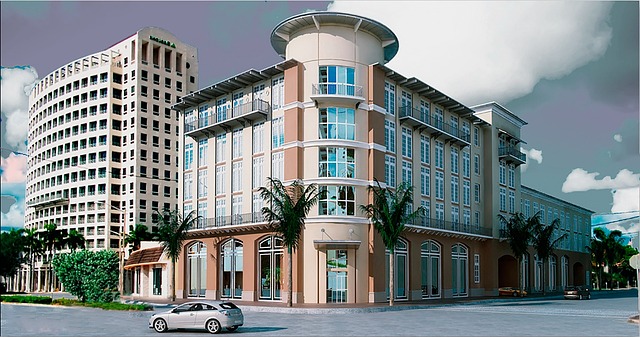In today's dynamic real estate market, developers and investors must adapt to evolving demands for office spaces, focusing on collaborative areas, technology, and flexible layouts. Mixed-use developments integrating offices, retail, and residential spaces cater to urban lifestyles. Understanding demographic shifts, tech advancements, and workplace culture is key for informed decisions in site selection, design, and leasing. Retail properties drive local economies and boost community growth, while industrial real estate facilitates efficient supply chains and cost optimization for businesses.
In today’s dynamic market, understanding the evolving demands of commercial real estate is paramount. From office spaces that foster productivity to retail properties driving local economies and industrial hubs ensuring supply chain resilience, each sector plays a crucial role in shaping urban landscapes. This article delves into the nuances of these sectors, exploring market trends, consumer behaviors, and strategies for investors, highlighting why real estate remains a cornerstone of global economies.
Understanding Market Demands for Office Spaces

In today’s dynamic real estate market, understanding the demands for office spaces is paramount for developers and investors alike. The modern workplace goes beyond mere desks and chairs; it encompasses collaborative areas, technology-driven amenities, and flexible layouts that cater to diverse business needs. As companies evolve, so do their requirements, influencing trends in office design and location preferences. For instance, there’s a growing shift towards mixed-use developments, where offices seamlessly blend with retail and residential spaces, catering to the integrated lifestyles of urban dwellers.
Real estate professionals must stay abreast of these market demands to maximize investment returns. This involves analyzing demographic shifts, technological advancements, and changing workplace culture. By understanding factors that drive office space utilization, such as proximity to transportation hubs, access to talent pools, and availability of recreational amenities, real estate stakeholders can make informed decisions regarding site selection, design, and leasing strategies.
Retail Properties: Driving Local Economies

Retail properties play a pivotal role in driving local economies and are a significant segment within the real estate market. These spaces, often vibrant and bustling, serve as the heart of communities, fostering economic growth and creating a sense of place. From small local shops to large shopping malls, retail buildings attract folks from nearby areas, generating foot traffic that benefits adjacent businesses and local services.
The impact of retail properties extends beyond direct sales. They contribute to the overall vibrancy and appeal of an area, attracting new businesses and investments. Well-managed retail spaces can enhance the quality of life for residents, provide employment opportunities, and stimulate local tax revenues. This, in turn, strengthens the region’s economy and encourages sustainable development, making retail a key player in the real estate landscape.
Industrial Real Estate: A Key to Supply Chain Success

Industrial real estate plays a pivotal role in ensuring supply chain efficiency and sustainability. These properties, designed for large-scale manufacturing, warehousing, and logistics operations, serve as the backbone of modern distribution networks. With ample space for advanced machinery, robust infrastructure to handle heavy goods, and strategic locations close to transportation hubs, industrial buildings streamline the movement of goods from production sites to end consumers.
Investing in quality industrial real estate can offer significant advantages to businesses. It allows companies to optimize their operations by reducing transportation costs, minimizing delays, and enhancing overall supply chain visibility. Moreover, these properties often come with flexible lease terms, enabling businesses to scale up or down as needed, adapting to market fluctuations and growth strategies. Effective utilization of industrial real estate is a key differentiator for successful businesses in today’s competitive marketplace.






